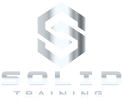This can be a lot to think of if you don't have the knowledge of anatomy like I do so we have broken it down into three categories: full body strength, core stabilization, and core movement. Almost all of our workouts include all three of these categories which has led to great strides in strength by many of our clients.
Full Body Strength- the core is used on almost all of your multi-joint movements, but some exercises will really require a strong core to execute the movement properly. This includes exercises like Turkish get ups, deadlifts, windmills, kettlebell anyhow, tire hits, and many more. These exercises combine a movement and stabilization of the core to keep the body in line. I would place the emphasis of the beginning of your workouts on these types of exercises.
Stabilization- despite most people’s belief, the core's main function is not to flex or crunch, but it is to stabilize your spine. The core muscles perfectly surround the spine and important internal organs and work in conjunction with each other to hold you in alignment. This should have high emphasis in your training. Try exercises like the plank, side plank, reverse plank, hip bridge holds, one arm carries, front levers, and much more. These are great to track your time to see that you are improving and can easily be done at home.
Movement- this is the most widely known way to work your core. This includes movements like crunching, sit ups, leg raises and other common movements. Most movements people do are only for the abdominals so be sure to add in rotational exercises to keep the obliques and back muscles strong. I prefer doing rotational exercises because you can practice minimizing your waistline which is harder to do with flexion exercises like crunching.
Now is a good time to start working on your core so when summer rolls around next year you can bust out your new, complete midsection. You will also notice your other movements getting stronger which will help you improve your whole physique.

 RSS Feed
RSS Feed
